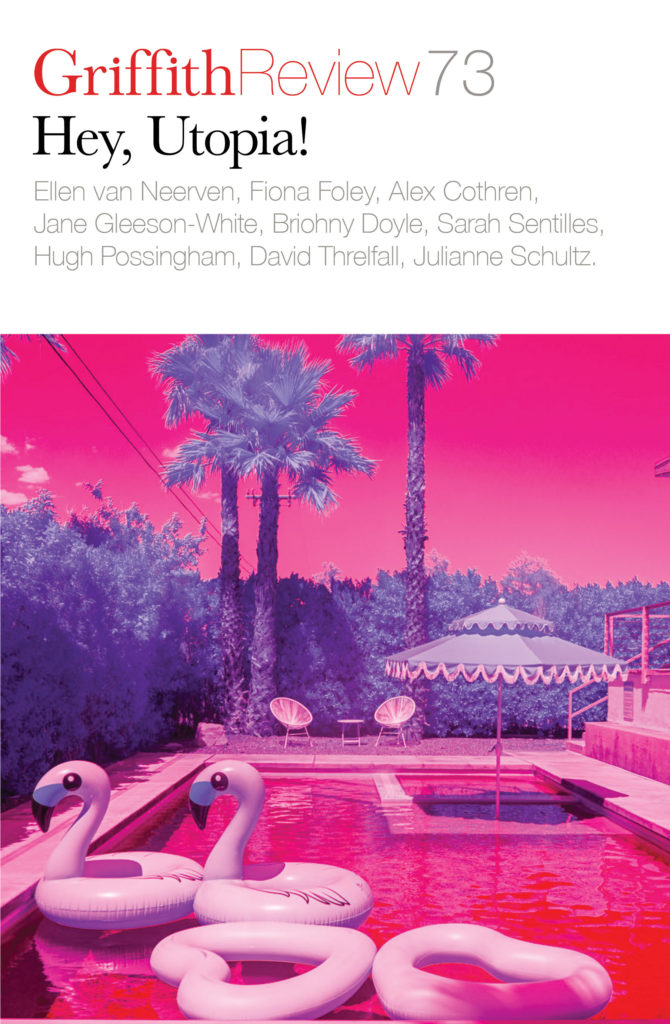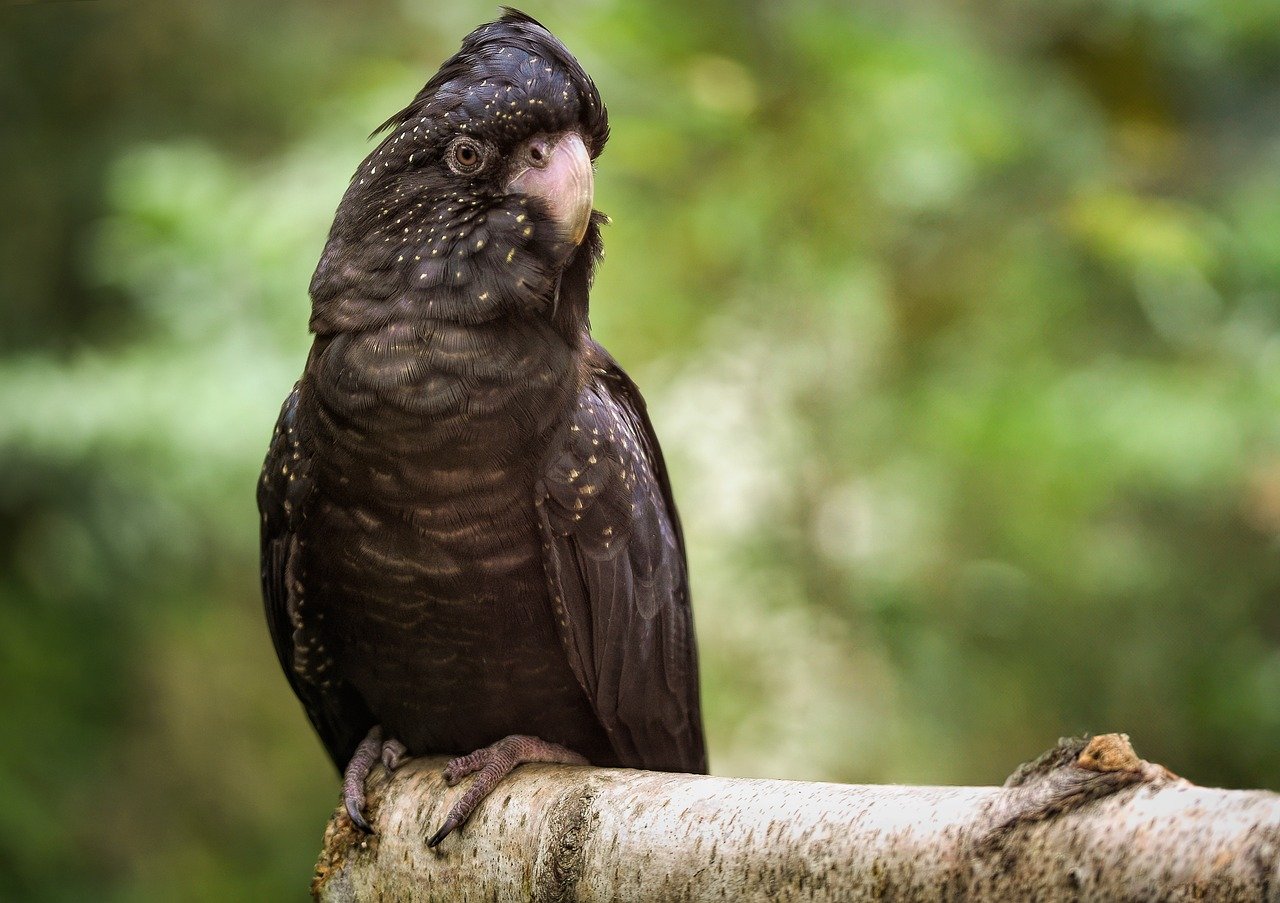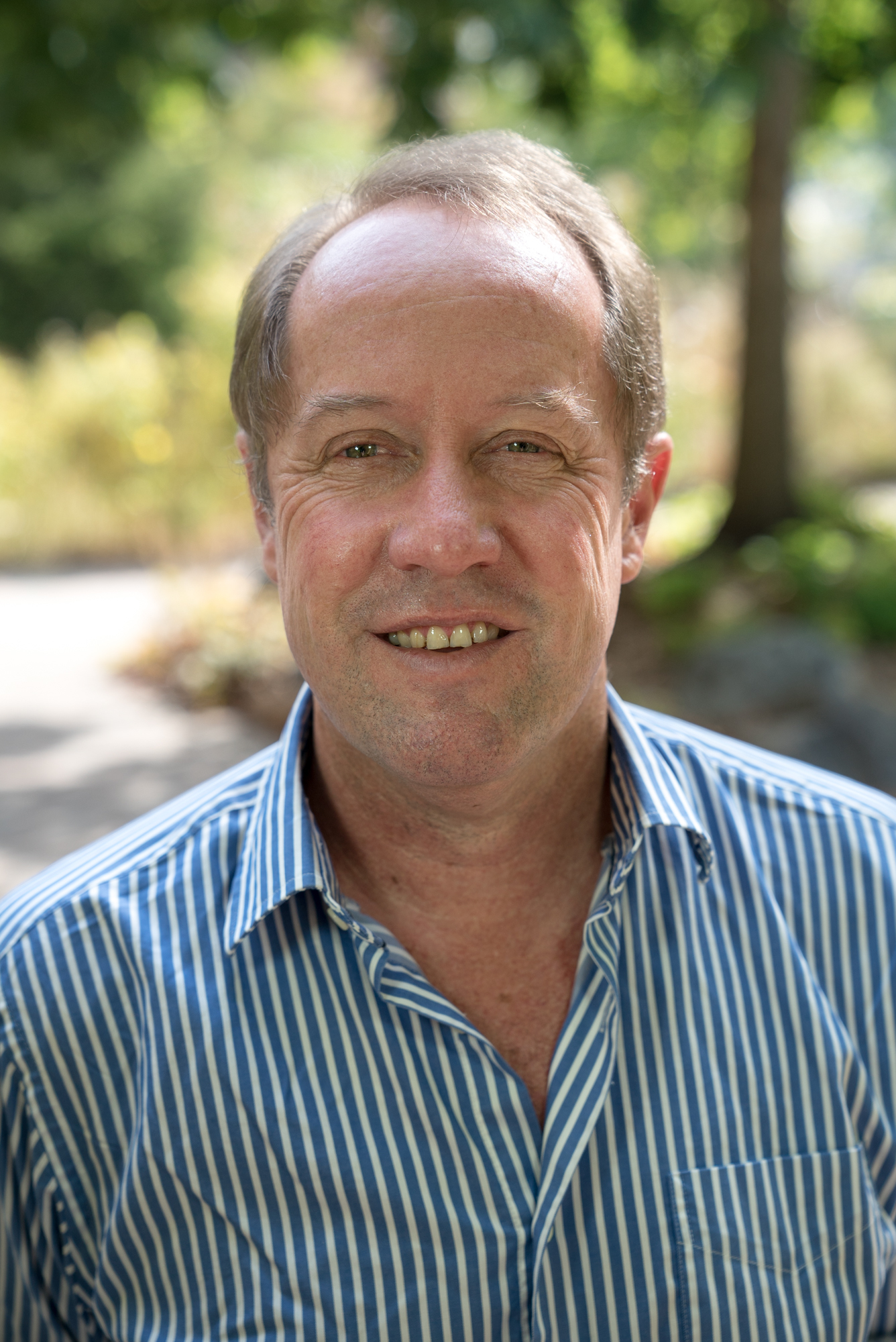Featured in

- Published 20210803
- ISBN: 978-1-922212-62-7
- Extent: 264pp
- Paperback (234 x 153mm), eBook

IN AUSTRALIA, A purportedly equitable and participatory democracy, it is popular to believe that we all have the freedoms and rights to engage in the discussions that create our society. We all get to vote – if we are the right age. We can all write letters to politicians. We can demonstrate in the streets without fear. We can remonstrate with our employers about unfair work practices. We can run for parliament. We can access the credible knowledge we need to make life decisions. I enjoy all those privileges, and I consider them to be fundamental rights.
Freedom of speech is one right I hold very dearly. In a training exercise I attended at The Nature Conservancy, staff were asked to pick a right that they would hypothetically die for: I picked freedom of speech. (Interestingly, most people were not willing to make such a sacrifice for anything.) Informed freedom of speech for everyone sits at the core of any ideal society, and the creation of such a place relies on some form of equity.
I’ve been thinking about this issue of equity in the context of science literacy. It’s my thesis that one key to science literacy hinges on the rise of citizen science, which, in turn, also lies at the heart of achieving any potential utopia. What I’d like to do here is explore the ways in which citizen scientists – or volunteers on science projects – immerse themselves in the task of garnering knowledge and asking questions, and connect that with the possibility that, as a result, these are people who are far more likely to demand, and engage in, participatory democracy. This, in turn, is crucial to any hope of achieving equity. And it’s crucial to any possibility of achieving sustainable environmental change.
ACROSS THE PAST twenty-five years, I’ve been lucky enough to be an active participant in the development of marine spatial plans in many countries around the world. Marine spatial planning defines what actions can, or cannot, be carried out in any place in the sea – this can also be called ‘marine zoning’. This planning provides ground-level entry into one of the most critical issues facing the complicated space of ecosystem management: an integrated framework for allocating uses to places that deliver social, ecological and economic outcomes. The purpose of such planning is to deliver win-win outcomes for nature, climate, the economy and equity – or more correctly, win-win-win-win outcomes. Since the establishment of the United Nations’ Sustainable Development Goals in 2015 – particularly the goal to reduce inequality within and among countries – our aim has been to produce plans that deliver equitable outcomes for both nature and people. But planning outcomes for people means asking the question, which people – if there are winners are there also losers? And that immediately leads to a consideration of equity: the outcomes for individuals and groups in any part of the sea must be considered and compared.
The field has evolved rapidly, and now marine spatial planning negotiations ideally allow traditional fishers exclusive access to an equitable fraction of their traditional fishing grounds while securing those resources in perpetuity via marine protected areas. If marine spatial plans do not deliver equitable outcomes for all parties – commercial, recreational and artisanal fisheries; the transport industry; traditional owners; tourism and so on – they invariably fail. And by fail I mean they either never get enacted or, if they do, people refuse to follow the zoning rules. As with so many things, there are many ways to fail but only one way to succeed.
Nor is the notion of ‘outcome equity’ straightforward. It does not mean everyone getting the same amount, but rather everyone getting a fair share and/or what they need. And if outcome equity seems feasible to deliver, there are at least two other forms of equity to which we should aspire: procedural equity and information equity. Procedural equity means that a decision – such as where different marine zones are placed – is made in a way that all parties have a fair say, an equal seat at the table. Everyone must be appropriately consulted, on their own terms, and, ideally, have their views and preferences integrated fully into the final planning process. Procedural equity isn’t easy to implement and is rarely achieved perfectly, but it’s not too hard to understand. However, the one kind of equity that is almost always ignored is information equity. If information equity is to be achieved, all of the people or groups involved must have adequate access to all the information they need to participate in an equitable process that delivers an equitable outcome. It is also important that this information is in an appropriate form – one that allows different groups to understand it, evaluate it and apply their consideration to the matter.
Until recently I’d never even thought about information equity. And that ignorance is almost certainly because, in terms of the world of information, I am ridiculously privileged: as the Queensland Chief Scientist and as a professor, I can access all sorts of information with ease. I can also access people with expertise in a vast range of topics. (This doesn’t make me intelligent, just fortunate.)
Why is information equity so important, and why is it invariably ignored? The examples I discuss here are about environmental issues, but they play out in all aspects of public life.
MARINE AND TERRESTRIAL spatial planning can be a contentious activity. As one would expect, strong views are expressed by many disparate groups and these can, at first, seem irreconcilable. Achieving consensus and win-win outcomes for nature and people relies on increasing informational equity.
There are notable successes. The Great Barrier Reef Marine Park Authority oversaw the rezoning of one of the world’s most iconic marine protected areas, the Great Barrier Reef. The authority invested a huge amount of resources in broad consultation, which assisted greatly with delivering an outcome that was lauded by most stakeholders. Similarly, the rezoning of many regions around Australia by state governments has also involved extensive consultation. I have assisted in a voluntary capacity in these situations and the experiences have made me realise the scope and scale of information inequity.
For example, as part of these rezoning processes, the Great Barrier Reef Marine Park Authority and other state-based organisations often used spatial planning software called Marxan that was developed by my lab to identify potential ‘green zones’. Sometimes I was brought in to explain the software and the principles of marine spatial planning to politicians, fishers and conservationists – sometimes to clear up misinformation or misconceptions.
In each case I was only partially successful, and my failures reflect my own inability to communicate complex issues simply and the fact that my audience and I share neither a common educational background nor a common understanding of how the world works. Just to be clear here, I am not saying that my understanding, knowledge or experience is any more valid than anyone else’s, merely different. At one community meeting a person asked why Marxan hadn’t come to the meeting and asked if they could meet Marxan.
This illustrates how easy it is to miscommunicate – in this case not even using scientific language, just a simple name. And this highlights the importance of increasing scientific communication skills, rather than making assumptions about background knowledge, in helping people participate meaningfully in almost any decision-making.
I slowly realised that understanding marine spatial planning processes requires knowledge across a huge diversity of issues and disciplines, including mathematical optimisation, applied economics, traditional knowledge, fisheries management and stock assessment, the ability to read algebraic formulae as readily as if it were a first language, knowledge of the distribution and abundance of ecosystems and species, definitions of what an ecosystem is, an understanding of how species data is used to build distribution maps, catastrophic processes, marine connectivity and larval dispersal, an overview of all the activities that can occur in the ocean, marine legislation, governance, marine ecology in general, trade-offs between objectives and how they occur, adaptive management…the list goes on. Given this long list of topics that cover so many kinds of knowledge, no one individual could hope to be across all of them.
How can we address what seems to be a hopeless situation? Information equity is fundamental to participatory democracy, which is fundamental to achieving any functional society – let alone a utopian one. But on many important topics that affect all people, such as spatial planning, achieving informational equity seems an impossible pipedream. There is no easy or fast solution to this conundrum, but the best suggestion I can come up with is to expand the number of people actively engaged in citizen science – and rapidly.
CITIZEN SCIENCE IS an activity where people who do not normally consider themselves scientists engage in the process of collecting, and in some cases analysing, interpreting and sharing, scientific information. The Australian Citizen Science Association defines citizen science as ‘public participation and collaboration in scientific research with the aim to increase scientific knowledge’. I choose to divide citizen science into three types.
The first form of citizen science – and perhaps the most entertaining and engaging – is directed to finding out which species live where. This is fun because there’s an element of discovery. Answering that fundamental question – what is where? – is the first type of citizen science. Here in Australia, thousands of birdwatchers are collecting and entering data about birds into apps such as Birdata or eBird via smartphones. The process can become almost addictive, adding new purpose to casual birding and, more importantly, providing data that creates maps showing where species are (or, if we can infer from when species are not mentioned specifically, where they are not) and how abundant they are. This is exactly the data required for spatial planning and for the development of environmental regulations. For those without a smartphone, the data can be entered on any computer – in the good old days of pen and paper, I remember filling out and mailing ‘atlas data sheets’ to BirdLife Australia to help create the first continent-wide atlas of birds in the world (BirdLife Australia’s ‘Birdata’ portal).
Citizen science data on the distribution and abundance of species is now routinely used to inform spatial plans and many other policies around the world. No single scientist could have collected the same amount of data without the help of such citizen scientists; the scope of data collected would often not have been possible for a single scientist to achieve in the same timeframe or across the same geographical area. Furthermore, a huge scientific literature has been built around assembling, analysing and interpreting this community-gathered spatial data. In almost all marine and terrestrial planning processes I have been involved in, data on the distribution and abundance of plants and vertebrates was crucial.
Just as important as having citizens engaging in data collection that generates information for policy and management is the fact that citizen science also creates informed citizens who ask critical scientific questions: Are there errors in the data and do they matter? How can we make maps of species distributions when so many parts of Australia are rarely, if ever, visited by people? This is the start of informational equity – it takes people on a journey from a discovery activity to asking critical questions about data quality and what constitutes credible evidence. Publicly available data on species distribution enables communities to meaningfully engage in conversations about contentious issues such as threatened species and urban development. Should that housing development be moved to somewhere where there are no koalas? Is a block of koala habitat important for the persistence of the species even if no koala has been seen in it for a couple of years? Should we be planting koala habitat in other areas? All of these questions are essential not only for planning, but for encouraging participatory democracy itself.
As soon as people have started to gather information about what is where, they usually ask more questions: what does this data tell us about whether species are becoming more or less abundant or changing where they occur?
THIS QUESTION – WHAT is changing? – can be thought of as phase two in the scientific development of a citizen scientist. It has been extremely important in changing policy for more than fifty years. It was data collected by birdwatchers in the US showing declines in certain species that culminated in Rachel Carson’s Silent Spring, the 1962 book that changed pesticide policy and inspired the North American environmental movement.
While it is important to ask what is changing, this question also makes us consider whether analysing data collected by random people in random locations at random times is the best way to detect change. Does an increase in the number of records of a particular species in a particular place occur simply because there are more people looking in that place? Could the increase be chance? Or the effects of a long-term climatic cycling? Or is it a real long-term change in abundance fuelled by something more pervasive, such as climate change, pollutants or habitat loss?
To explore change, citizen scientists ideally collect the same data, in the same way, at the same locations, across many years. This longitudinal data requires more commitment and more attention to process, and its analysis is also more difficult to undertake than creating maps of where things are. (The science of making distribution maps is hard enough!) But change data is fundamental to informing environmental policy and management on land and in the sea. Some citizen science programs are specifically designed to look at change. The ClimateWatch project seeks to understand how changes in temperature and rainfall are affecting the seasonal behaviour of plants and animals, and Ocean Connect Mangrove Citizen Science Gold Coast monitors mangroves at five sites across Queensland to record seasons of fruiting and flowering for mangroves and assess any changes as indicators of changes in climate.
Even as a scientist, it took me a long time to move from asking the ‘where’ question to exploring change. Six years ago, as part of the federally funded Threatened Species Recovery Hub of the National Environmental Science Program, we started the TSX, a Threatened Species Index for the nation (arguably more important than – and not to be confused with – the ASX, the Australian Securities Exchange).
Since 2018, the TSX has been instrumental in contributing to national policy, especially the recent review of the federal Environmental Protection and Biodiversity Conservation Act. That recent statutory review highlighted Australia’s failure as a nation to arrest the decline in listed threatened species over twenty years, using 20,000 distinct sequences of data collected about seventy different bird species nationwide. This level of information left the reviewers of environmental legislation in no doubt about the fate of our threatened species. Wouldn’t it be fabulous if Australians were just as interested in the state of the environment as the state of the economy? If they turned to the TSX as readily as they approach the ASX to give them a sense of what’s happening in their world?
THE TSX PROVIDES vital data for policymakers to use to guide and improve land management decisions and policy. And citizen scientists involved in projects that detect change are much more powerful advocates for change itself. If they are involved in the actual data collection, they also have a better understanding of the pitfalls of over-interpreting small or short-term changes; they can become strong advocates for long-term monitoring organisations such as the Bureau of Meteorology and the Terrestrial Environmental Research Network, which collects a wide variety of environmental data across Australia and shares it publicly so scientists can use it in their research.
Knowing that the sky is falling is necessary, but it’s not always a sufficient prompt for taking action. Knowing what to do about the falling sky is much more useful in terms of generating a response. This means that phase three of the development of any citizen scientist comes when they ask, how do actions cause change? And in my ideal world, everybody in Australia should not only be asking this question, but should also be involved in solving the problems we face and making the most of whatever opportunities emerge.
For the past decade I’ve been working with governments and non-government environmental organisations to evaluate whether our conservation interventions actually work. That sounds like a strange question to ask: don’t we evaluate every action we take in well-run businesses? No company would stop keeping account of their costs and profits, would they? Well, in the environmental world, we have embarrassingly little data on whether our actions are making a difference. This kind of reckoning requires a new level of thought not often found in citizen science projects, which are primarily focused on the first or second phases of activity, as outlined above. Ideally, we would collect data before and after interventions, at multiple locations and with matched control sites where no interventions had been undertaken. All of which is easy to say and hard to pull off. So often we want to track the consequences of a conservation action by following it as and where it happens – which ignores the fact that, ideally, we need to know what was happening before any intervention took place (which might mean delaying the action in the first place) or what is happening in places where we are not taking action (which means delineating and preserving control sites). Data collection before an action is taken and control-site data can seem like a waste of effort – and precious resources – but it is important to showing causality between actions and outcomes.
That said, and coming back to the world of marine spatial planning, there is now a huge amount of useful information about the impacts of marine protected areas on nature and people – and much of it has been collected by citizen scientists. Indeed, the engagement of recreational fishers in monitoring species, abundances and sizes of fish in and outside of marine protected areas is the most powerful weapon for advocating for marine spatial planning. When people are engaged in the action of discovery, they not only become excellent scientists; they start to advocate for actions that make a difference. When people see the increase in the size of fish in places where there is no fishing relative to places where there is fishing– and understand that big fish have disproportionately more offspring than small fish – advocates for marine protected areas grow rapidly. It’s a clear example of the power of information and connected knowledge in the context of local and locally used ecosystems.
The phrase ‘seeing is believing’ is now a hackneyed one. And any utopia requires decision-making by the people, for the people. This only underscores the importance of informational equity across all people: information derived by the people, for the people. The power of citizen science to remake or reimagine the world lies in the opportunities it gives to everyone involved – opportunities to learn about the world, to pose questions about how we affect the world and to consider how any change can make a difference. Furthermore, being engaged in citizen science provides people with the confidence to speak out about matters they care about and to question policies or decisions with which they disagree. Informed freedom of speech only works when people are empowered, by science, to speak up.
It’s a circular relationship. In my ideal world, everyone is a citizen scientist and, through that, information inequity becomes extinct. To bring that utopia into being in the first place, citizen science itself is a powerful tool.
References
United Nations, United Nations Sustainable Development Goals, https://www.un.org/sustainabledevelopment/sustainable-development-goals/
Giakoumi, S, McGowan, J, Mills, M, Beger, M, Bustamante, RH, Charles, A et al. 2018, ‘Revisiting “success” and “failure” of marine protected areas: A conservation scientist perspective’, Frontiers in Marine Science 5: 223. https://doi.org/10.3389/fmars.2018.00223
Fernandes, L, Day, J, Lewis, A, Slegers, S, Kerrigan, B, Breen, D et al. 2005, ‘Establishing representative no-take areas in the Great Barrier Reef: Large-scale implementation of theory on marine protected areas’, Conservation Biology, 19(6): 1733–1744. https://doi.org/10.1111/j.1523-1739.2005.00302.x
Bayraktarov, E, Ehmke, G, Tulloch, AIT, Chauvenet, AL, Avery-Gomm, S, McRae, L et al. 2020, A threatened species index for Australian birds, Conservation Science and Practice, 3(2): e322. https://doi.org/10.1111/csp2.322
Share article
About the author

Hugh Possingham
Professor Hugh Possingham became Queensland Chief Scientist in September 2020. A conservation scientist and mathematician, he has held positions in the university, public and not-for...
More from this edition

Musique concrète
InterviewThe original brutalism is the projection, in concrete, of strong social ideals. It’s also the architectural sedimentation of a given period: the hopeful ’50s up to the ’70s. But to me more personally, it’s a totally alien form of architecture: in my hometown, most of the buildings are small and made of wood. So raw concrete, sign me up! I was hooked very early on: I remember very fondly some of the brutalist buildings in Halifax, Nova Scotia, from my travels in Canada as a kid.

Dystopian photo album
PoetryBuried in slough of immaculate lust We wave off the iron-man model Coughing up money and fake lottery tix Ipso facto zippers and guylines, Flysheets and groundsheets, door...

Erasure
EssayIt was thanks to a series of deliberate decisions made during the nineteenth century that women’s critical labours were designated ‘unproductive’ and simply wiped from view. Key to these erasures was Alfred Marshall, the revered father of neoclassical economics, who advocated strict limits on women’s choices lest they behave selfishly.